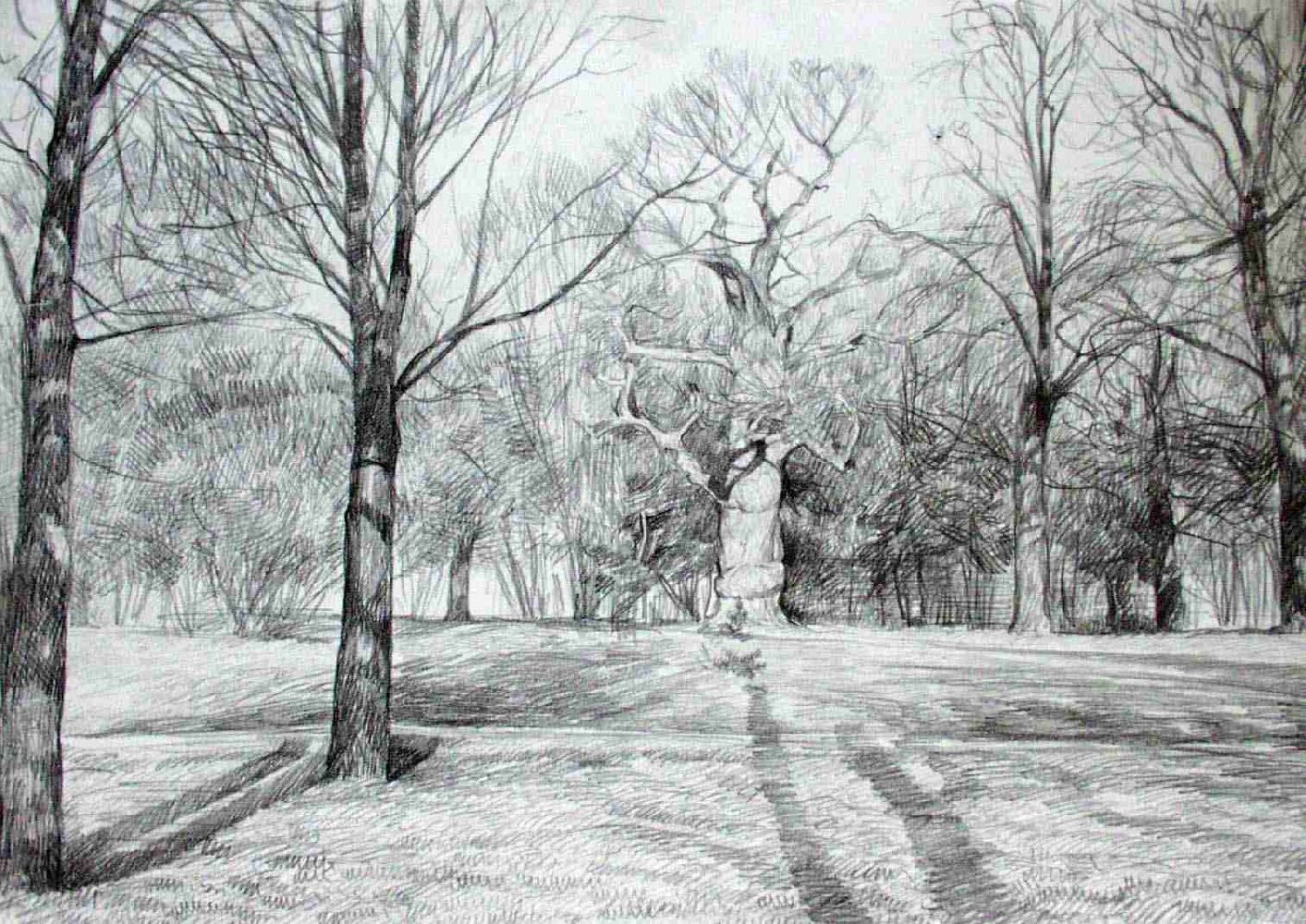

Title: Oak in Kolomenskoye Drawing Sketch by artist Simon Kozhin
Shipping: $300.00
Artist: N/A
Period: Contemporary
History: N/A
Origin: N/A
Condition: Museum Quality
Item Date: 2001
Item ID: 3090
Oak in Kolomenskoye by artist Simon Kozhin. work on Paper. This is a one of a kind, pencil drawing. It is located in the south of Moscow. It got its name from a village that came to known in the early XIV century. In the XV-XVII centuries it was the estate of the Grand Princes of Moscow. The Kolomenskoye complex includes: the church-cum-belfry of St.George the Victor (16-th century), the Church of the Mother of God of Kazan. Monuments of old Russian wooden architecture of the 17th century were moved to Kolomenskoye: among them a mead brewery from Preobrazhensk village in Moscow Region, a tower from the Bratsk stockade in Siberia, and little house Peter I lived in Archangelsk. The Kolomenskoye oak grove boasts trees that are 600 and even 800 years old.
Link: http://en.wikipedia.org/wiki/Sketch_(drawing)
A sketch is a executed freehand drawing that is not intended as a finished work. If in oil paint it is called an oil sketch. In general, a sketch is a quick way to record an idea for later use. Artist's sketches primarily serve as a way to try out different ideas and establish a composition before undertaking a more finished work, especially when the finished work is expensive and time consuming (as in the case of a large painting or fresco). Sketching sharpens an artist's ability to focus on the most important elements of a subject and is a prescribed part of artistic development for students. Dry media such as pencil or pastel are often preferred due to time constraints, but a quickly done watercolor study or even quickly modeled clay or soft wax can also be considered a 'sketch' in the broader sense of the term. Graphite pencils being a relatively new invention, the artists of the Renaissance could make sketches using the expensive method of a silver stylus on specially prepared paper (known as silverpoint), with results similar to a modern pencil sketch, or, more cheaply, using charcoal, chalk, or pen-and-ink. Contrary to popular belief, artists often use erasers when drawing; the eraser may be used to remove rough construction lines, or to soften lines for visual effect. The most commonly used eraser for pencil drawing is the kneaded eraser, which has a soft, sticky surface that enables the artist to lift the graphite or charcoal from the drawing surface without smudging. White plastic erasers can cleanly erase line work, but tend to smudge heavy shading. The sketchbooks of Leonardo da Vinci and Edgar Degas are two examples of many done by famous artists which have become art objects in their own right, although many pages show more thoughtful studies rather than true sketches. The ability to quickly record impressions through sketching has found varied purposes in today's culture. Courtroom artists are usually sketchers. Sketches drawn to help authorities find or identify wanted people are called composite sketches. Street performers in popular tourist areas often include artists who sketch portraits within minutes.